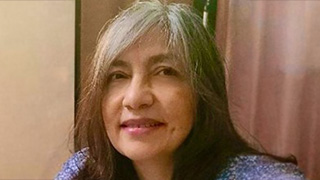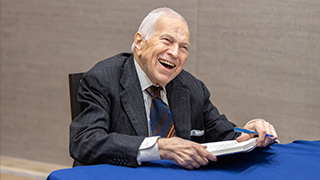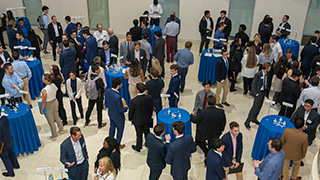High-Tech SHMS Lab Boosts Seton Hall Pirates’ Pitching
Thursday, April 13, 2023
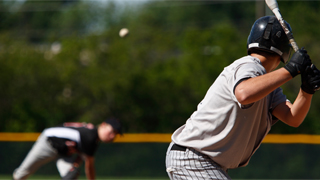
Members of SHMS are using cutting-edge technology to study the motion of Seton Hall Pirates pitchers.
It’s no secret that technology is playing a significant role in shaping 21st century baseball. Think Moneyball, the blockbuster book and movie highlighting the rise of statistical analysis to produce winning Major League teams.
“Technology is influencing decision-making at every level of the sport, from Little League to the Big Leagues” notes Richard (RJ) Boergers, Ph.D., ATC and associate professor in the Department of Athletic Training at Seton Hall University’s School of Health and Medical Sciences (SHMS). As the level of competition increases, so does the use of technology— but it’s no longer limited to Moneyball-inspired statistical analysis.
As Boergers can attest, next-level technology is also having a positive impact on Seton Hall Baseball. In SHMS’ state-of-the-art Gait/Motion Analysis Laboratory on the Interprofessional Health Sciences (IHS) Campus in Nutley, Boergers and a multidisciplinary team work collaboratively to perform cutting-edge motion capture analysis on Seton Hall Pirates pitchers that goes beyond injury prevention.
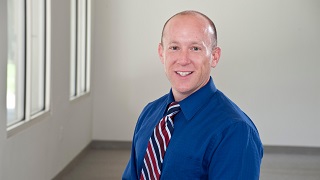
Richard Boergers, Ph.D., ATC
“I’ve always had an interest in pitchers’ arm injuries due to my early experience working as a staff athletic trainer for Seton Hall Baseball over two decades ago,” notes Boergers, who later received his Ph.D. in Health Sciences/Movement Science at SHMS and became a full-time faculty member. “In my current role as a biomechanist and a researcher, I’m still concerned with mitigating the risk of arm injuries, but I’m also searching for ways that we might be able to improve pitching performance by enhancing velocity,” he says.
In the lab, Boergers and his colleagues collect data on pitchers using a system of 16 infrared motion capture cameras. The process is like video game production; students affix 49 reflective markers to key points of their body and proceed with a bullpen-style pitching session to a catch net at regulation distance of 60 feet, 6 inches. Boergers uses baseball-specific software to translate motion recordings into biomechanical data. “This program provides us with in-depth kinematic and kinetic data in a web report that we can analyze—that’s the exciting part,” he says. Based on the motion capture analysis data, Boergers and a comprehensive interdisciplinary team—including a physical therapist with a pitching background; team coaches; athletic trainers; and strength and training staff—collaborate to develop individualized plans to mitigate injury risk or improve pitching performance.
“We meet as a group to discuss different strategies for tackling problems we identify in the pitcher’s motion. In some cases, if we observe tight or weak muscles in a player’s arm, the athletic trainer will conduct further assessments on him and develop therapeutic interventions; in other instances, the strength training staff will develop a custom training modality to help a player become more explosive in his pitching. The interdisciplinary team is the key to our success,” he observes.
“I’m fortunate to have a strong professional relationship with Seton Hall Baseball Head Coach Rob Sheppard for over 20 years. When I explained that we had the capacity to do motion analysis on the pitchers, he was on board right away. We knew it had to be very collaborative for this to be a success. We have a great multidisciplinary team,” he adds.
Boergers says that one of the most exciting outcomes from the motion capture studies is the opportunity to employ the data in retrospective research studies. In fall 2021, Boergers and Manfred Minimair, Ph.D., professor in the Department of Mathematics and Computer Science and director of the M.S. in Data Science program, were awarded an internal seed grant through the Opportunity Meets Innovation Challenge grant made to Seton Hall by the New Jersey State Office of the Secretary of Higher Education to apply machine learning models to the baseball pitching data to identify important variables in the players’ pitching motion.
“We’re looking to identify which variables in the pitching motion are key in determining elbow biomechanical efficiency (pitch velocity normalized to elbow torque) and shoulder biomechanical efficiency (pitch velocity normalized to shoulder force). Several studies have used simple linear regression, but we thought it would be novel to apply machine learning models to see what they would discover,” he notes.
It’s been gratifying to be part of an interprofessional collaboration that has expanded beyond the IHS Campus, Boergers says. “I’m looking forward to advancing our research in this exciting new phase, employing technology in new ways to look at baseball.”
Categories: Research, Science and Technology


